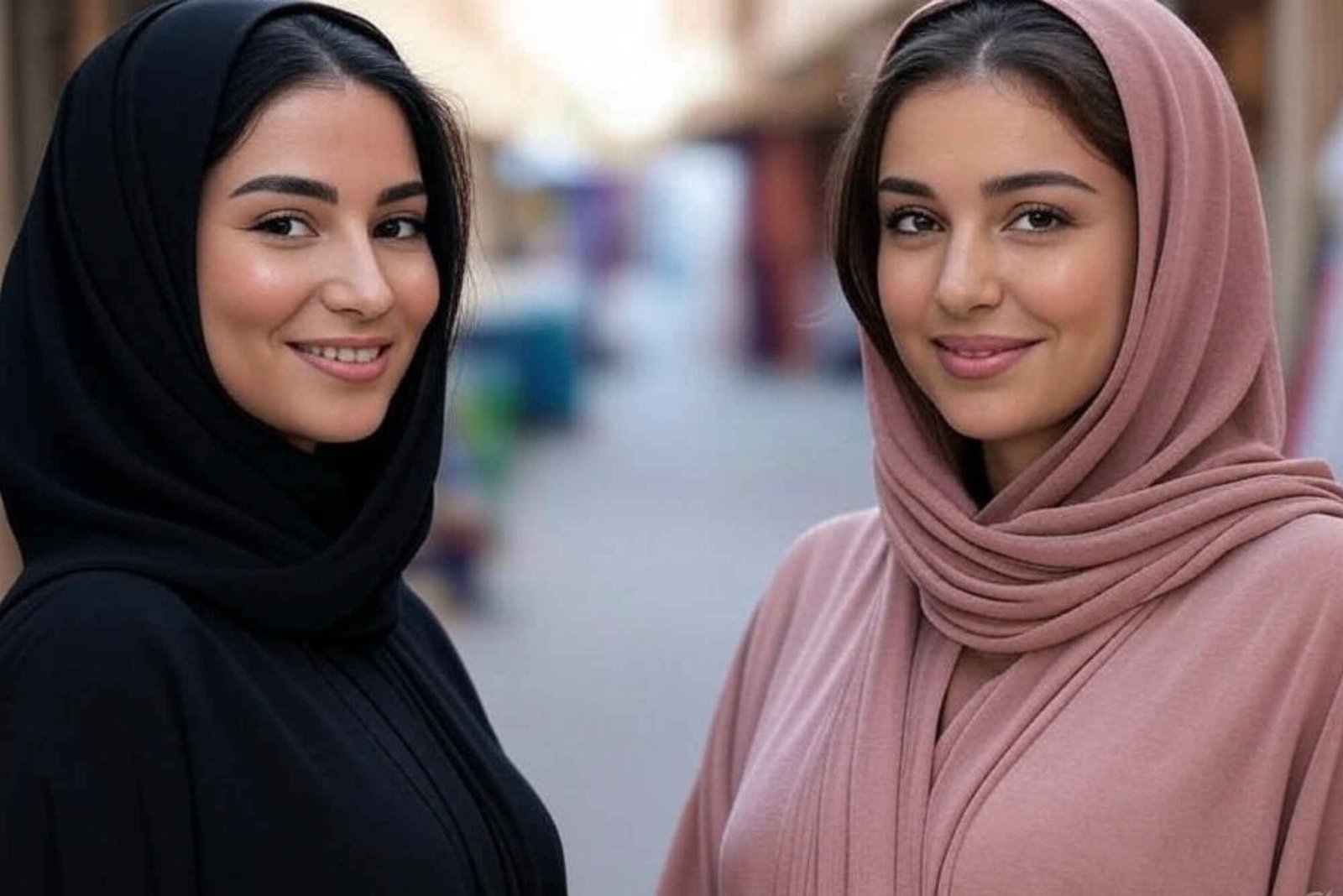Do you want to know about abaya vs kaftan? What is the difference between so you are right place. In the vast and colorful world of traditional fashion, two garments often compared and sometimes confused are the abaya and the kaftan. Both are elegant, flowing pieces of clothing worn by women, and each carries deep cultural significance. However, despite surface-level similarities, abayas and kaftans serve different purposes, have distinct origins, and reflect unique elements of the cultures they come from.
This article explores the nuanced differences and similarities between abaya vs kaftan, their historical roots, uses in contemporary fashion, and how to choose between the two based on style, occasion, and personal preference—with insights from a skilled ladies tailor in Abu Dhabi who understands the cultural and stylistic significance of each garment.
Understanding the Abaya
The abaya is a long, cloak-like robe traditionally worn by Muslim women, particularly in the Middle East and North Africa. It is most commonly associated with countries such as Saudi Arabia, the United Arab Emirates, and Qatar. Abayas are typically black and are worn over regular clothes, often accompanied by a hijab (headscarf) or niqab (face veil) for modesty, in line with Islamic teachings. For those seeking custom-made designs or alterations, a ladies tailor shop in Abu Dhabi can provide expertly crafted abayas tailored to individual preferences and cultural styles.
While traditionally plain, modern abayas come in a wide variety of styles. Embroidered cuffs, beaded trims, flowing cuts, and luxurious fabrics such as chiffon, silk, and crepe have transformed the abaya from a modest covering into a statement of personal style.
Abayas serve both religious and cultural functions. For many, they are a symbol of modesty and piety, but they also offer a canvas for self-expression within the boundaries of traditional attire.
Exploring the Kaftan
The kaftan, by contrast, has a more diverse and global history. Originating in ancient Mesopotamia, the kaftan has been worn by various cultures including the Ottoman Turks, Moroccans, Persians, and even the Russian aristocracy. Over the centuries, the kaftan has taken many forms, but it is generally characterized by its long, flowing shape, wide sleeves, and rich embellishments.
In Morocco, the kaftan is a traditional formal garment often worn during weddings and celebrations. In West Africa, it takes on different patterns and names but serves similar ceremonial functions. In the Western fashion world, kaftans were popularized in the 1960s and 70s as exotic loungewear, often associated with bohemian and luxury resort styles.
Unlike the abaya, the kaftan is not religiously mandated. It is more often seen as a cultural or fashionable item. It can be casual or ornate, with luxurious versions made from brocade, satin, or organza, adorned with sequins, beads, or intricate embroidery.
Abaya vs Kaftan: Key Differences
Let’s break down the main distinctions in the abaya vs kaftan comparison:
| Feature | Abaya | Kaftan |
| Origin | Islamic/Middle Eastern | Ancient Mesopotamian/Ottoman/Moroccan |
| Purpose | Modesty, religious and cultural significance | Cultural, ceremonial, fashion |
| Style | Typically black, simple or slightly decorated | Colorful, heavily embroidered, diverse patterns |
| Function | Worn over clothing as outerwear | Worn as a main garment |
| Usage | Daily wear, especially in the Gulf | Occasions, events, weddings, or fashion |
| Religious Role | Often tied to Islamic modesty codes | No direct religious connection |
While the abaya is primarily a religious garment meant to preserve modesty, the kaftan is more about heritage, tradition, and fashion.
Similarities Between Abaya and Kaftan
Despite their differences, abayas and kaftans also share similarities:
- Flowing Silhouettes: Both garments are loose-fitting, allowing for comfort and elegance.
- Cultural Identity: Each serves as a marker of cultural pride and tradition.
- Global Fashion Influence: Designers around the world have incorporated elements of both abayas and kaftans into modern collections.
- Adaptability: Both can be dressed up or down depending on the fabric, color, and embellishments.
Modern interpretations often blur the lines between abaya and kaftan, with hybrid garments combining the simplicity of an abaya with the rich detail of a kaftan. These designs appeal to fashion-forward women looking to maintain modesty while expressing individuality.
Abaya vs Kaftan in Contemporary Fashion
In recent years, the global modest fashion movement has brought renewed attention to garments like the abaya and the kaftan. Influencers and designers from the Middle East to North America have showcased how these traditional outfits can be reimagined in chic, contemporary ways.
Abayas today come in pastel colors, feature open-front styles (similar to dusters or cardigans), and are often worn over Western-style clothes. They are frequently seen on the runways in Dubai, Doha, and even London.
Kaftans have found a place in both Eastern and Western wardrobes. Moroccan kaftans, in particular, are known for their exquisite craftsmanship and are often worn during weddings, Ramadan iftar parties, and Eid celebrations. Western designers such as Oscar de la Renta, Tom Ford, and Yves Saint Laurent have famously drawn inspiration from the kaftan.
Choosing Between Abaya and Kaftan
When deciding between an abaya vs kaftan, consider the following factors:
- Purpose of the Outfit:
- Need something for religious observance or daily modest wear? Go for an abaya.
- Attending a wedding or cultural celebration? A kaftan may be more appropriate.
- Style Preferences:
- If you prefer simple, classic elegance, the abaya’s sleek look may suit you.
- If you love vibrant colors and detailed embroidery, the kaftan is ideal.
- Climate and Fabric:
- For hot climates, lightweight abayas in breathable fabrics work well.
- Kaftans made from rich fabrics may be more suitable for cooler evenings or indoor events.
- Cultural Significance:
- If you’re wearing the garment as part of your cultural heritage or religious identity, choose accordingly. An Emirati woman might feel more aligned with an abaya, while a Moroccan woman might reach for a traditional kaftan.
Final Thoughts
In the debate of abaya vs kaftan, there is no winner—only different expressions of identity, tradition, and fashion. Both garments are beautiful in their own right, reflecting the diversity and richness of the cultures they originate from. As global fashion continues to evolve, the abaya and kaftan remain timeless staples, proving that modesty and elegance are not mutually exclusive.
Whether you’re dressing for a sacred occasion or simply exploring new styles, understanding the distinction between abaya and kaftan helps you appreciate not just their form, but the cultural and historical stories they carry.




